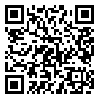Volume 28, Issue 2 (4-2025)
J Arak Uni Med Sci 2025, 28(2): 0-0 |
Back to browse issues page
Download citation:
BibTeX | RIS | EndNote | Medlars | ProCite | Reference Manager | RefWorks
Send citation to:



BibTeX | RIS | EndNote | Medlars | ProCite | Reference Manager | RefWorks
Send citation to:
Mahmoodi S A. A Review on the Attitude Toward Childbearing Based on Islamic Sources. J Arak Uni Med Sci 2025; 28 (2)
URL: http://jams.arakmu.ac.ir/article-1-7872-en.html
URL: http://jams.arakmu.ac.ir/article-1-7872-en.html
Department of Islamic Studies, School of Medicine, Arak University of Medical Sciences, Arak, Iran , seyed.mahmoodi1885@gmail.com
Abstract: (675 Views)
Introduction: Today, declining birth rates and families’ reluctance to have children for various reasons pose challenges for both individuals and societies. One of the key factors influencing fertility is individuals’ attitudes toward this issue, with religious beliefs being among the most fundamental perspectives. The Islamic faith, in particular, has addressed this matter in numerous verses and narrations. This study aims to explore Islamic religious sources’ viewpoints regarding fertility.
Methods: The research is based on an extensive review of authentic library documents and data from various databases such as PubMed, Scopus, ScienceDirect, as well as search engines like Google Scholar. The findings indicate that, in addition to several verses in the Quran, Islamic texts related to the Imams, such as Nahj al-Balagha and Sahifa Sajjadiya, explicitly encourage childbearing and population growth, while condemning population decline. These sources identify four general factors—individual, economic, political system, and social-cultural status—that influence population increase or decrease.
Conclusions: Given the valuable Islamic resources regarding childbearing and the existing challenges in societies related to population decline and aging, it is possible to take significant steps to improve individuals’ and families’ attitudes toward childbearing by reinforcing Islamic lifestyles and religious beliefs.
Methods: The research is based on an extensive review of authentic library documents and data from various databases such as PubMed, Scopus, ScienceDirect, as well as search engines like Google Scholar. The findings indicate that, in addition to several verses in the Quran, Islamic texts related to the Imams, such as Nahj al-Balagha and Sahifa Sajjadiya, explicitly encourage childbearing and population growth, while condemning population decline. These sources identify four general factors—individual, economic, political system, and social-cultural status—that influence population increase or decrease.
Conclusions: Given the valuable Islamic resources regarding childbearing and the existing challenges in societies related to population decline and aging, it is possible to take significant steps to improve individuals’ and families’ attitudes toward childbearing by reinforcing Islamic lifestyles and religious beliefs.
Send email to the article author
| Rights and permissions | |
 |
This work is licensed under a Creative Commons Attribution-NonCommercial 4.0 International License. |






